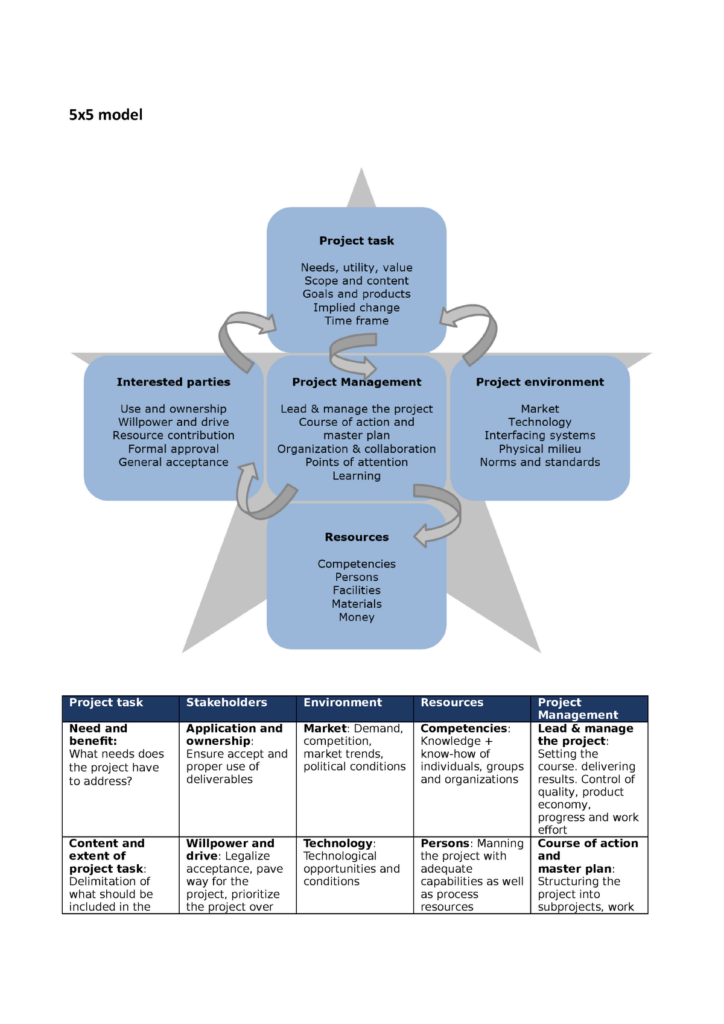Stakeholders
A stakeholder is anyone who is interested in the outcome of your project. In most cases, they are members of the project team, project managers, executives, sponsors, customers, and end users.
Stakeholders are those who are affected by your project at any point in its life cycle, and their input can directly influence its outcome. Managing stakeholder expectations and communicating continuously are essential to project success.
Project team members can benefit from using stakeholder analysis to better understand the range of parties involved in the project and how their unique characteristics may impact project risk. Stakeholder analysis gives the team perspectives and tools that can assist identify and remove obstacles in a setting where office politics frequently seem to obstruct a project’s advancement.
Example of Stakeholder Analysis Context Diagram _ Refeference :https://www.pmi.org/

Project Spotlight on Stakeholders
In corporate strategic planning, stakeholder analysis is frequently seen as the initial stage. Here, we allow—or force—our thoughts to think about the requirements of everyone but ourselves as we design a company concept for the future. The importance of stakeholder analysis will be felt at the project level if it is a valued and regular activity at the organizational level. It is also possible for the mindset and outcomes to trickle down and be used in other initiatives.
Principles and supporting materials for project management frequently include stakeholder awareness and the necessity of analysis.
- Definition of Project Management
- Organizational Planning Tool
- Project Plan Development
- Project Organization
- Project Plan Updates
- Scope Statement and Scope Verification
- Project Cost Management
- Quality Planning
- Project Team Directory
- Team Building
- Communication Planning Tool
- Information Distribution
- Risk Identification
- Risk Quantification
- Procurement Planning
It becomes obvious that an understanding of stakeholders’ needs and expectations is crucial to success: “the project management team must … manage and then influence those [stakeholder] expectations to ensure a successful project”
PMBOK® – Book P15
Stakeholder Analysis Approach
A individual or group must have some interest in the project or some degree of influence in order to be considered a stakeholder. Understanding their interests would be helpful, but so would knowing how the project may affect them if a need went unanswered.
Stakeholder Interest and Impact Table
Instead of referring to these stakeholders as customers, owners, sponsors, etc., it is frequently useful to identify them by name in order to obtain a more powerful knowledge of requirements and expectations.

Interest-Influence Classification
Influence indicates a stakeholder’s relative power over and within a project.
Importance indicates the degree to which the project cannot be considered successful if needs, expectations, and issues are not addressed.

Stakeholder Participation Matrix
The project phases should be reflected in the lifecycle stages (the ones displayed are from [PMI, 1996]). Similarly, the involvement categories displayed are general and ought to correspond with the kinds the project team is hoping for.

5X5 Model

What Is Project Organization in Project Management?
The word project organization relates to the project team’s coordination, communication, and management style throughout the project lifetime. You maximize resources, establish clear communication about roles and duties, and remove possible barriers by using project organization.
What Is Organizational Structure in Project Management?
A project management organizational structure is used to establish the hierarchy and authority of those participating in a particular project. On a chart, the structure specifies each team member’s function and the reporting lines for team members to refer to during a project.
Types of Project Organizational Structures
Functional organizational structure ( Cross-functional projects )
Staff members are organized into departments in the functional project management organizational structure. And each of those departments represents a different functional aspect of the organization, such as human resources, finance, or marketing.Each of the departments is overseen by a functional manager. And their job is overseen by an executive.
Functional managers make decisions and organize initiatives on a horizontal scale. And they choose team members from the corresponding department’s workforce for each project. These team members combine their departmental tasks, such as payroll processing, with project activities.

Projectized organizational structure ( Small agencies and new startups )
Projects (rather than departments) are the largest divisions of personnel inside the projectized (or project-based) project management organizational structure. Similarly, work coordination is project-oriented, and hence vertical.
Furthermore, project managers—one per project—have the power to monitor work. And they assign staff people to projects, which implies they are devoted to projects rather than departments.
A matrix structure is a grid with two report lines for each project team member. This structure has several versions, including:

Matrix organizational structure
Weak structure
This matrix organizational project management structure appears to be the same as the functional organizational structure at first glance. In this matrix organization, however, staff members coordinate the project’s activities across departments (rather than a functional manager).

Balanced structure
Full-time project managers are not used in balanced matrix architectures. Instead, a project manager is also a staff person who juggles departmental responsibilities with part-time project supervision. Furthermore, a functional manager is still in charge of project budgeting, resource allocation, and other details.

Strong structure
Project management is the sole focus of a unique department inside the robust matrix structure. Additionally, every employee in that department works full-time as a cross-functional project manager under the direction of a functional manager.




